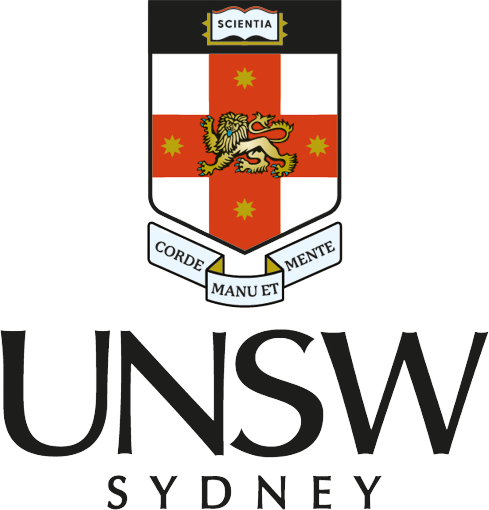“Aggressive.”
That’s the word that David Snowdon, Chief Electrical Engineer of Sunswift III, uses the most when describing the first version of one of Sunswift’s most illustrious solar cars in the history of the team.
This was the car that crashed during testing for the 2005 World Solar Challenge (WSC) only to come 9th after completing the race unofficially, broke the Transcontinental Record by three days, and was redesigned into a second version that won them the prestigious Freescale Technical Innovation Award for most efficient car: the triple threat.
The Crash
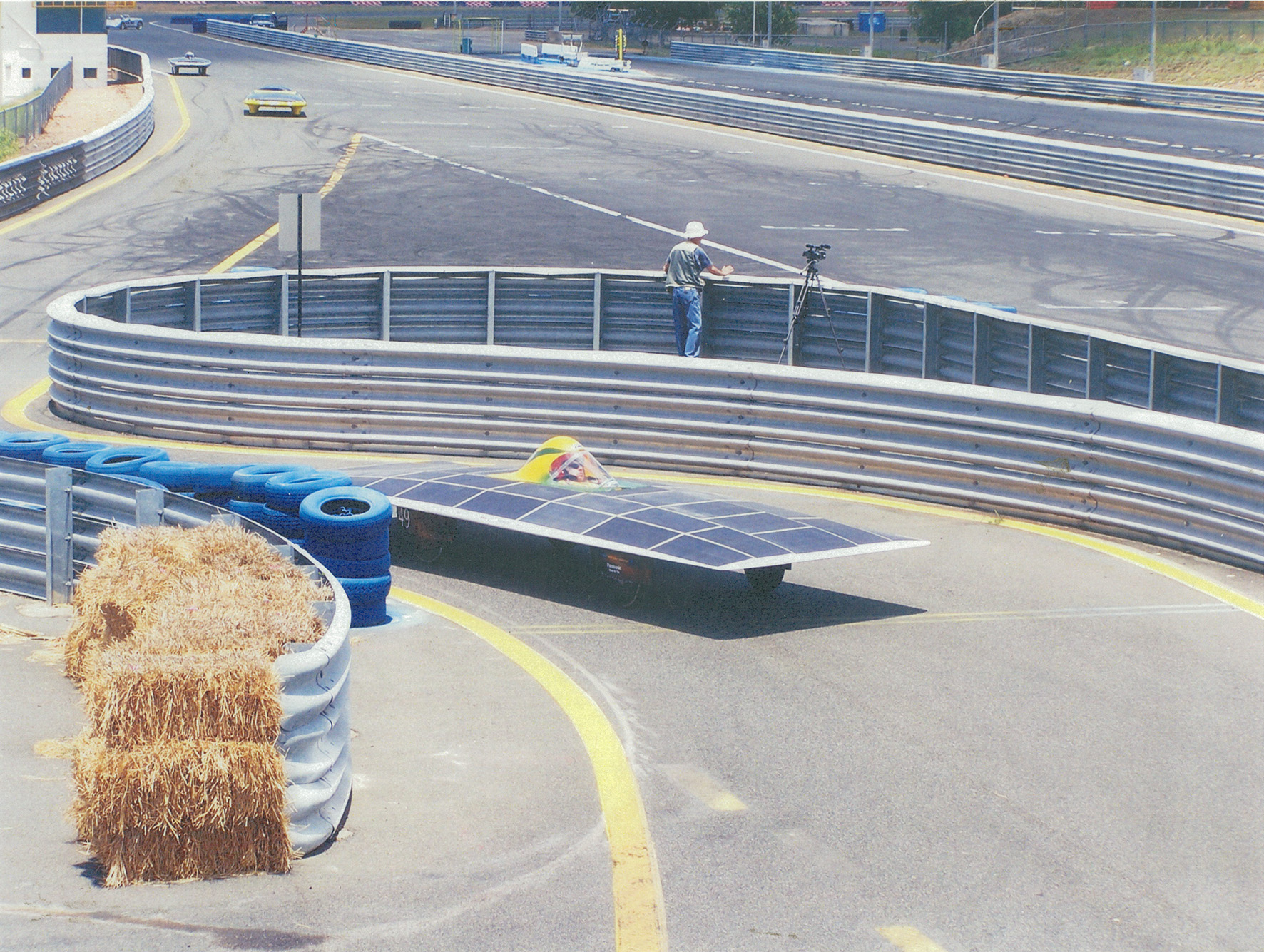
It happened like this. Sunswift 3.1 was undergoing a test-drive just prior to the WSC 2005. The testing road was rough and undivided. Difficulty with the steering made the car swerve significantly from its course and rather than risk colliding into any on-coming traffic, the driver made the correct decision to drive off the road.
In retrospect, David admits that the team was “too ambitious” when building the model’s first iteration, which was a “complete redesign” from Sunswift II.
“We tried to do too much with it,” says David. “It meant that it was six metres long and two metres wide and we didn’t build our own solar array.”
Indeed, the team had decided not to follow in the footsteps of their predecessor of constructing their own solar cells, instead using highly powerful Gochermann panels with laser-cut Sunpower cells. These panels were almost 12m2 in size and produced around two kW.
“With encapsulation you just need so much iteration in order to really get it right,” David explains. “It’s just not really within the scope of our project to get those arrays right.”
As a result, the car was designed around the flatness of the solar panels from the outset and lacked the curvaceousness of its predecessor, leading to compromises on the aerodynamics.
One key weakness of Sunswift 3.1 lay in its carbon fibre structural spats in the suspension system. The spats’ aerodynamics bearings were integrated with the mechanical components of the car that held the wheels in place.
“The structural spats were a cool idea, but I don’t think we did a good job of executing it,” says David. “We did a really good job of building the moulds and the carbon fibre U-shaped pieces, but we really didn’t do a very good job in the mechanical adhering that would keep them in place.”
Indeed, the suspension system was badly damaged after the crash, with the spats being the point of failure. The car’s push-pull tank steering also turned out to be too unwieldy, which made the car difficult to drive in a straight line and caused the vehicle to veer off-course.
After the crash, Sunswift missed the scrutineering for the WSC and were unable to compete. The team was desolate.
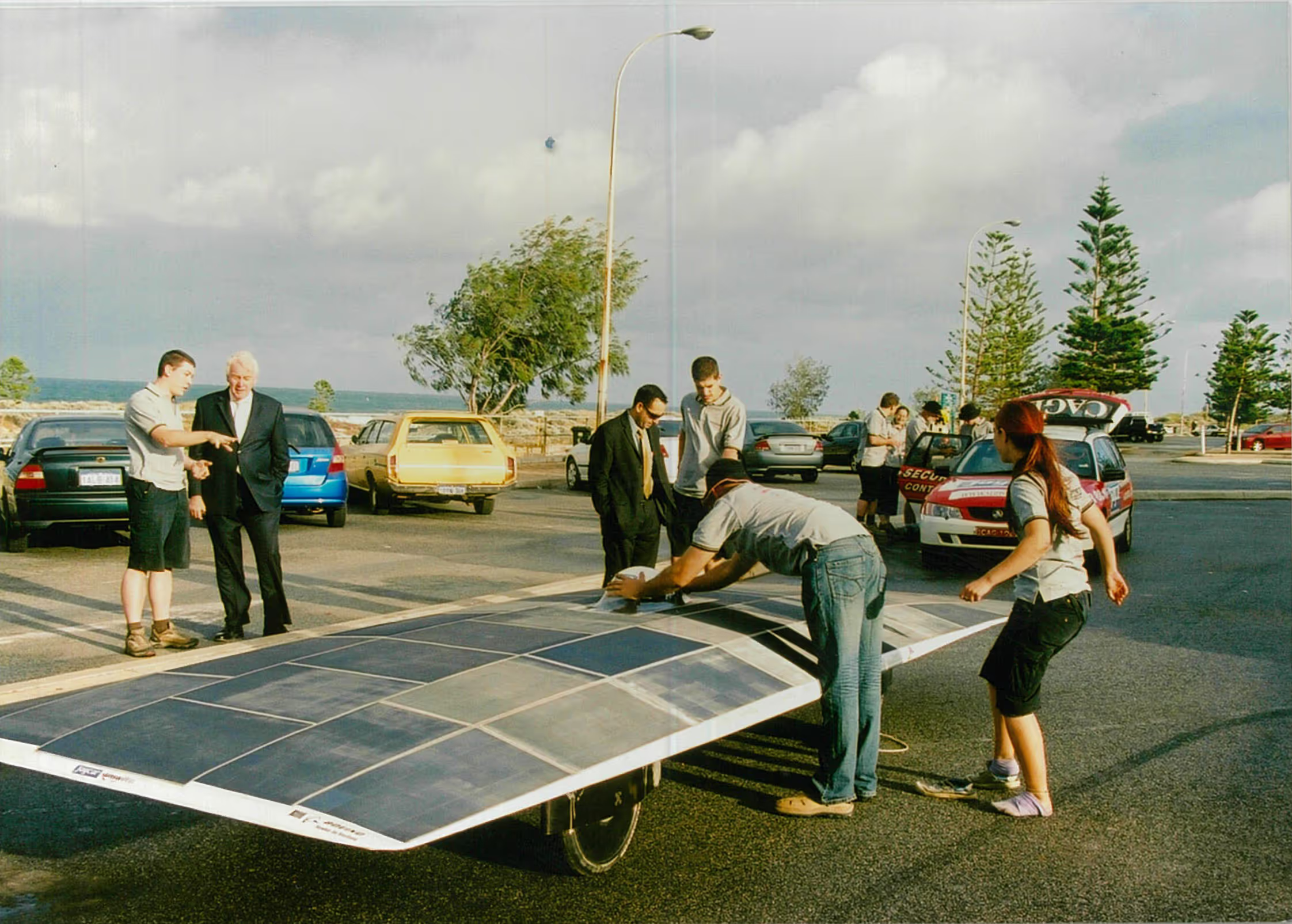
“Everyone was so down on themselves,” David recalls. “We all went back to the youth hostel and felt sorry for ourselves.”
However, all was not lost. David’s friend from a rival racing team, Nuon, came to their garage the next morning and encouraged them to get back on the road – a show of solidarity within the solar racing community.
“He was like, ‘What are you guys doing? Let’s get up! Let’s fix this!’,” says David. The Nuon team then assisted them in finding a welder to fix several giant steel parts onto the car.
“We just over-engineered everything to make sure it was 100 per cent solid,” he continues. “We then worked overnight the following night, patched up the holes in the array, swapped out the broken panels.”
Despite this accident, the car turned out to be incredibly efficient and well-performing. Sunswift III was allowed to complete the race unofficially and became the 9th vehicle to cross the finish line, completing the course in five days even though they essentially started “from the back of the pack”.
“We were pretty happy with having finished it all, because the car was only really running properly by day three or four,” says David.
The Second Transcontinental Record Attempt
Armed with their newly consolidated solar car, Sunswift III decided to give the Perth-to-Sydney drive another go in January 2007, eight years after the team’s first attempt.
After a bit of a membership reshuffle in the team, Sunswift thought that attempting the record again would provide an opportunity for a much-needed test-run before the WSC 2007.
“Most had never been involved in a race,” says Andrew Wrigley, then electrical engineer on the team.
“We had seen from previous challenges that it is not always the fastest solar car that wins. Reliability and team performance were just as important.
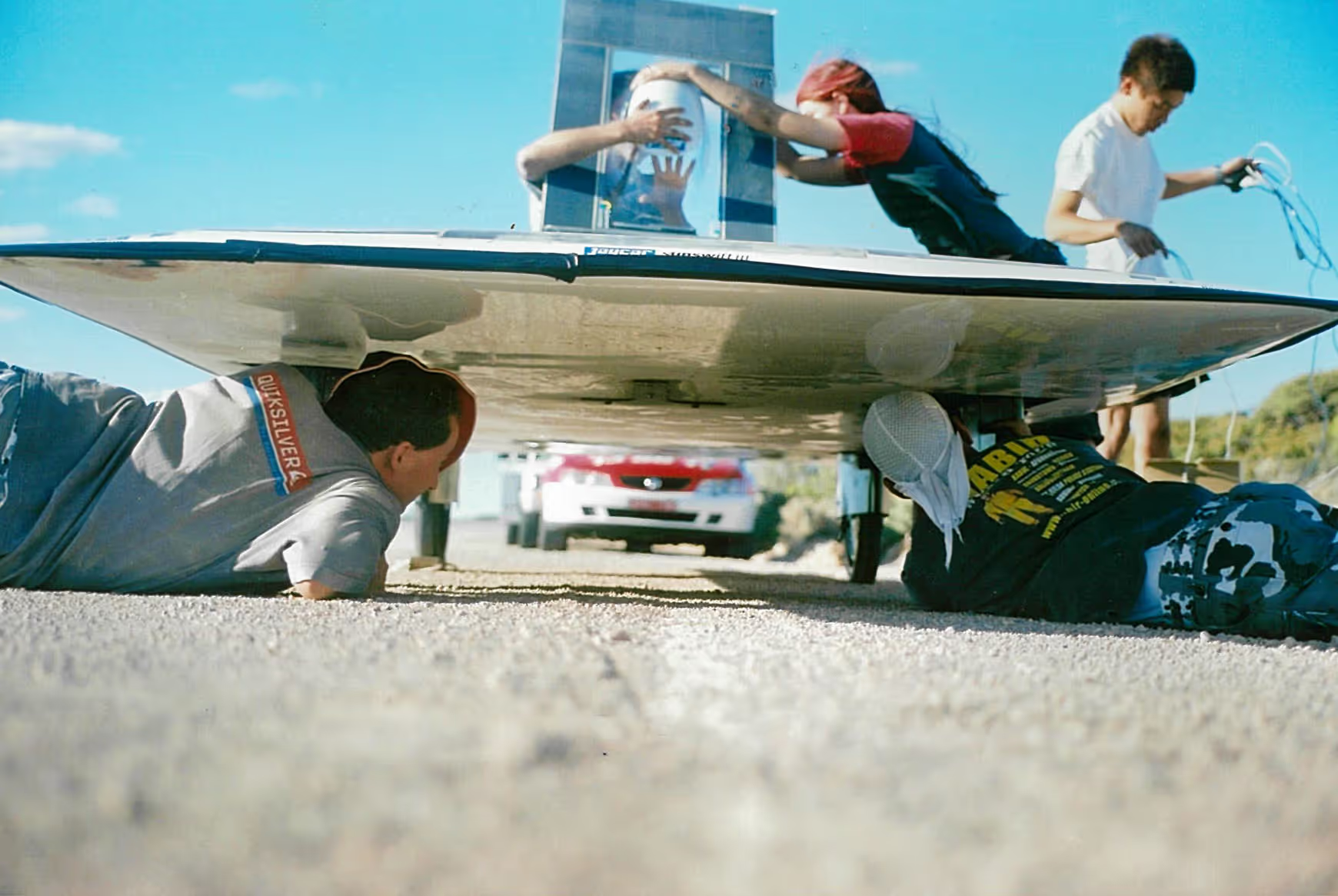
“On more than one occasion I have seen two teams neck and neck for a prime finishing position, and the team that won out in the end was able to change their tyres on the car faster.
“That was what made the real difference in the end: which team could keep their car on the road for as long as possible and make any maintenance or control stop well-organised and efficient.
“Those are the sorts of things we hoped to improve with [the Transcontinental Record attempt].”
In preparation of the attempt, the team made a few minor improvements to reduce the weight of the vehicle by modifying its brakes and steering. Mark Smith, mechanical engineer and driver of Sunswift 3.2, recalls that emphasis was placed on improving the control of the car.
To do this, Mark redesigned the steering bellcranks so that there was less steering rack deflection under steering loads. The push-pull tank steering was also removed, which greatly improved the control of the car.
The team set off in a fleet formation with three support cars accompanying Sunswift III. To help offset the carbon emissions from this large fleet, the team decided to donate to not-for-profit climate action group Green Fleet to plant 25 native trees.
Despite some overcast weather, the successful mechanical modifications meant that the car completed the Perth-to-Sydney route in five and a half days, breaking Dick Smith’s previous record by almost three whole days, crossing the finish line at Circular Quay.
Andrew says that the attempt was about more than breaking the record. “After a few years of unsuccessful WSC attempts, we needed to prove that Sunswift could safely complete a solar car race,” he says.
Saving the Suspension
Despite the success of the attempt, however, the team approached the construction of Sunswift III’s next iteration with caution.
“There was a bit of an erosion of the trust that the university had in the team,” says Mark. “There was not a lot of good history in the previous experiences.
“The second incarnation of Sunswift III was going to…try to build that trust a bit more, to ensure the continuation of the project.”
Mark led the project of rehauling Sunswift 3.1’s suspension system in preparation of the WSC 2007. “What we set out to do was to build a really solid suspension system that wasn’t going to give us any failures and maintain the high level of aerodynamics that [Sunswift 3.1] had.”
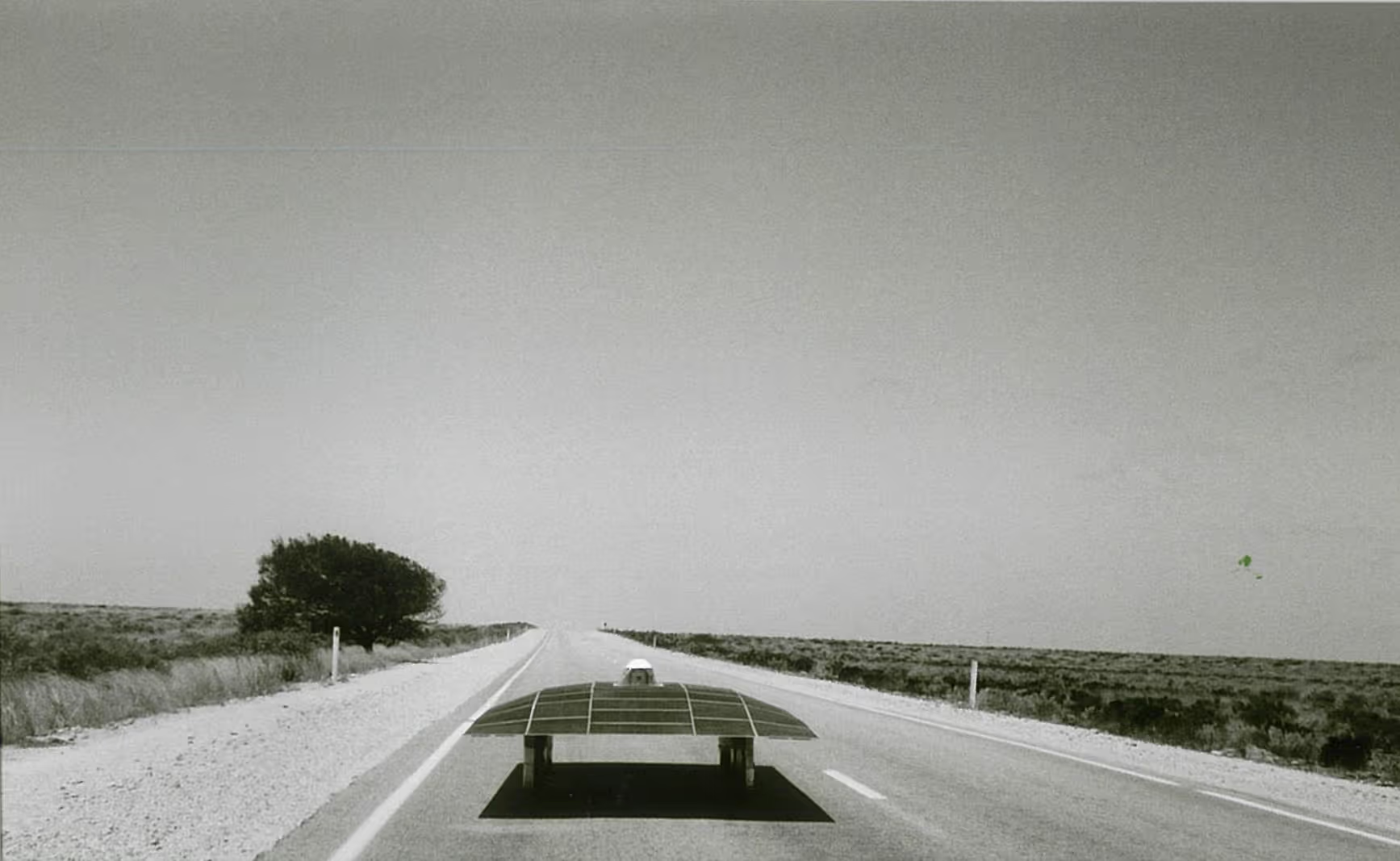
The fifth-year engineering student spent several months welding and fabricating chromoly high-performance steel in the workshop by himself, working regularly, in the usual Sunswift fashion, from 10am to 11pm.
“It was a really excellent personal challenge,” he says. “I knew that what I was doing was obviously going to support someone – keep someone alive for the duration of the race.”
Sunswift 3.2 turned out to be a very robust car and the handling had improved significantly by the WSC 2007. Mark drove a third of the 3000km route and can personally attest to the stability of the newer iteration.
Like previous models before it, Sunswift 3.2 was built with a rather limiting seating position and drivers were required to lay down in the cockpit with their head in a bubble. Although they retained Sunswift 3.1’s efficient back-to-back seater model, the car was only driven by one person at a time.
Coming from rural NSW with some experience in truck-driving and a semi-trailer licence, Mark also had no problem adapting to the heat that’s often associated with driving in the vehicle’s tight and compact space.
“From memory, I had this sort of feeling that it wouldn’t be a very pleasant experience, but it was good,” says Mark. “There was always a little bit of radio chat, a little bit of banter.”
Sunswift III placed 9th overall in the WSC 2007 and 4th in the Adventure Class Challenge, reaching a top speed of up to 100km/hr. The team also won the CSIRO’s Freescale Technical Innovation Award for most efficient car out of 41 international competitors.
To the team’s surprise, Sunswift was awarded the Engineers Australia Engineering Excellence Award for Education and Training that year.
After these impressive feats, however, Mark remains humble with a philosophy that underpinned the team’s outlook after the crash of the WSC 2005: to prioritise safety over victory.
“I didn’t set out to do anything extremely ground-breaking,” says Mark. “Just to build a good, solid, well-designed, well-analysed piece of equipment.”
Related Achievements
World Solar Challenge '05
UNSW Sunswift III was the 9th car (and the first with silicon solar cells) to cross the line, arriving in 5 days.
World Solar Challenge '07
• Placed 4th in the Adventure Challenge
• Placed 9th overall in the World Solar Challenge
• Prestigious Freescale Technical Innovation Award (Most efficient)
Engineers Australia
Jaycar Sunswift III broke the world record for a solar car journey from Perth to Sydney. The team finished the journey in 5.5 days, breaking the previous record by 3 days.

